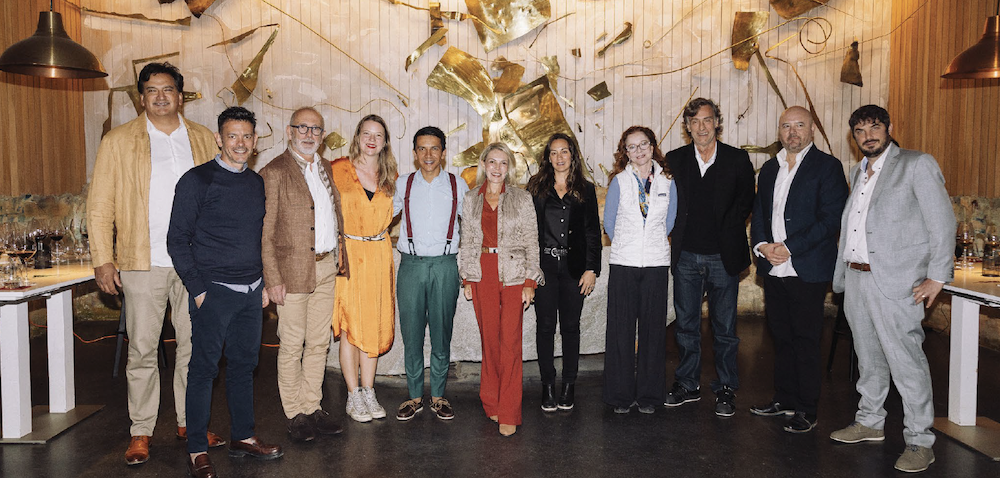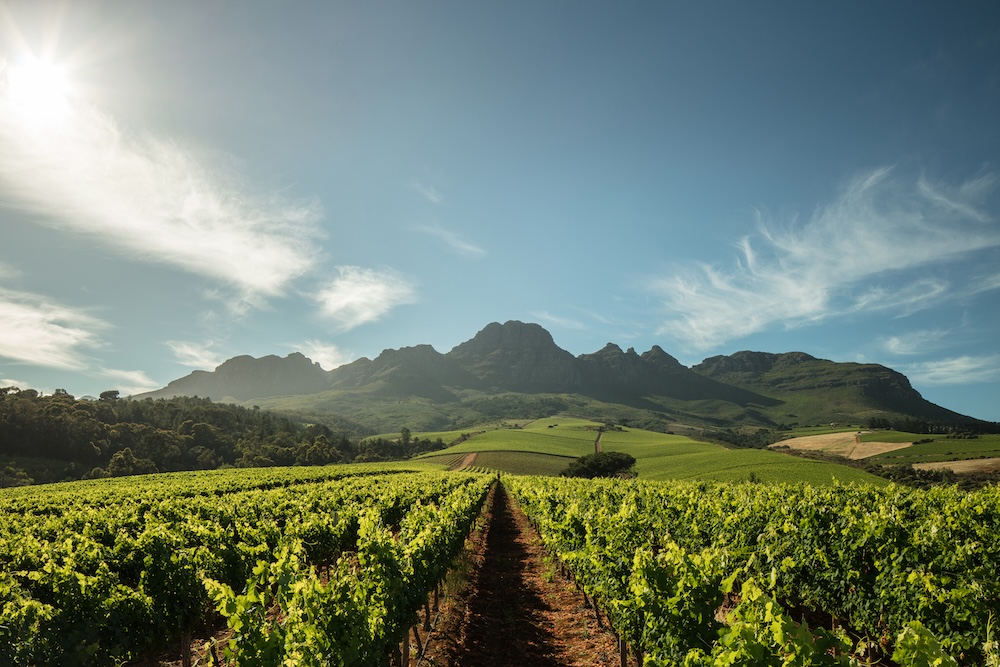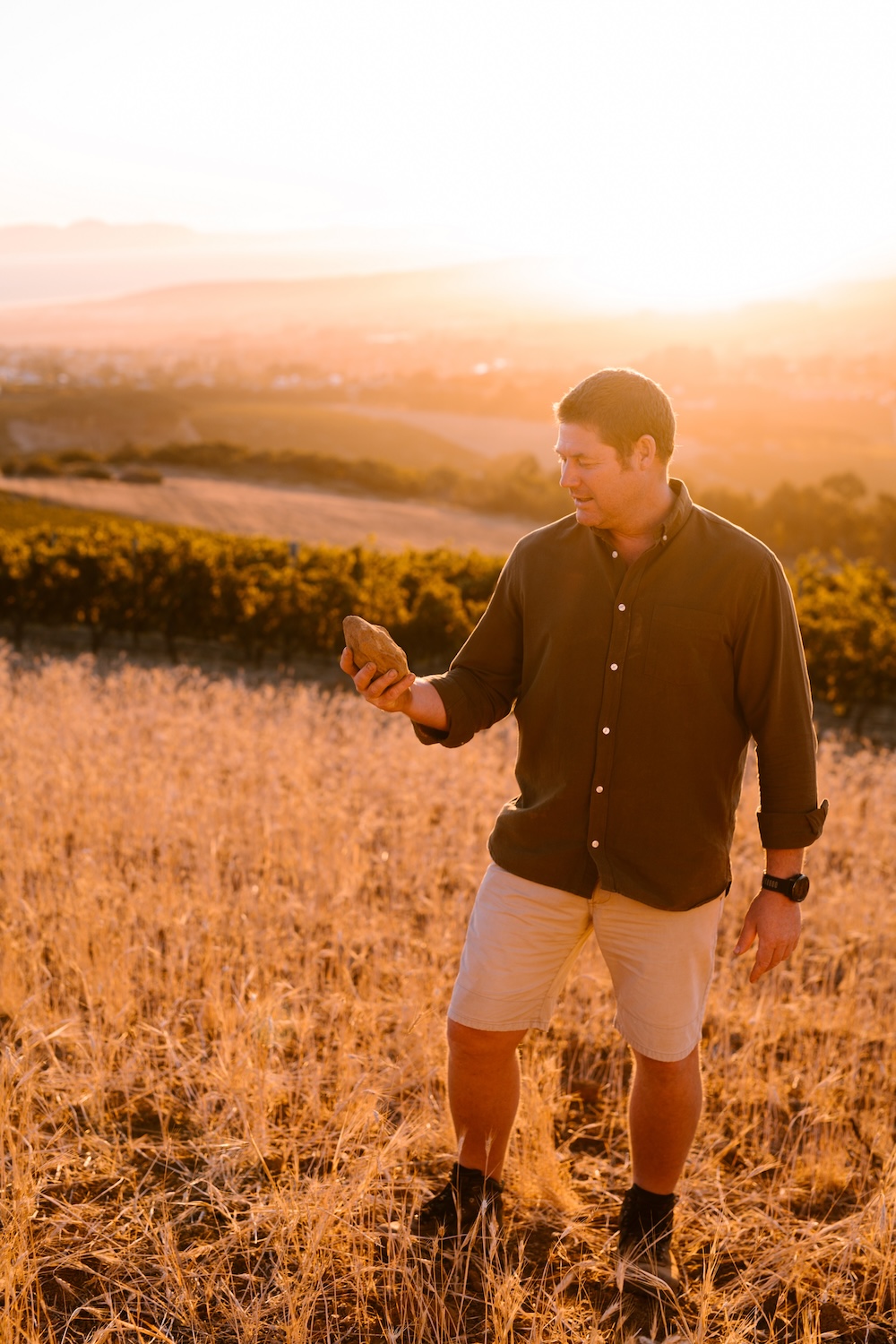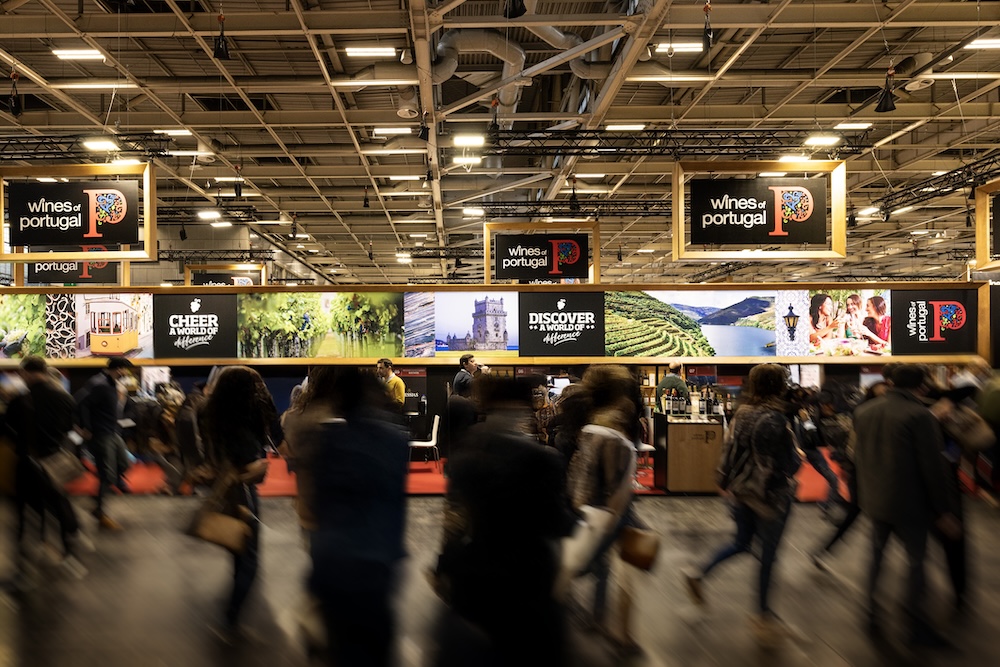
Discovery

Discovery
By Samarie Smith-Meletiou Dipwest Photographs: Courtesy of the estates, posted on 16 October 2023
Stellenbosch is the heartbeat of South African Cabernet Sauvignon, whose legacy has been nurtured here for over a century, rooted in soils as old as 600 million years. This storied region boasts a landscape sculpted by towering mountains and nuanced valleys where Cabernet Sauvignon has become inseparable from its identity. Furthering its international footprint, Stellenbosch Cabernet was founded as a collective, underscoring a decade-long journey of refining Cabernet Sauvignon and beckoning the curious Cabernet Sauvignon drinker to delve deeper.
A tapestry of excellence unfolds throughout its various wards, from the high slopes of the Simonsberg and Helderberg Mountains to Bottelary, Banghoek and Polkadraai. Also marketed as "The other great Cabernet region," Gilbert & Gaillard's recent tasting of Stellenbosch Cabernet Sauvignon aptly showcased an impressive collection of wines receiving 90+ scores out of 100. These accolades underscore the undeniable quality and artistry synonymous with Stellenbosch Cabernet Sauvignon. While generational cellars continue to produce gems, younger producers are also achieving recognition. Boutique winery Deux Frères in the Simonsberg ward exemplified this trend with their top score of 96 for their 2020 Tribute Bordeaux blend, followed by their 2020 Cabernet Sauvignon with 95 points. Since its inception in 2008, this remarkable venture has grown significantly, offering visitors the opportunity to stay in one of their Villas and be immersed in the rich oenophilic culture of the region.

In the world of Cabernet Sauvignon, the distinction between the Old and New World is gradually fading, and Stellenbosch stands proudly alongside other renowned wine regions like Bordeaux, Napa/Sonoma, Mendoza, Margaret River, and beyond. While celebrated for exceptional Cabernet Sauvignon from the prestigious left bank, Bordeaux grapples with formidable challenges - its capricious climate frequently depriving the variety of the sunshine it seeks. Although Bordeaux's weather during the Rugby World Cup might have defied this trend, stringent regulatory constraints tend to inhibit creative expressions, providing discernible advantages to Cabernet powerhouses in regions such as Stellenbosch and Napa.
David Trafford, a member of the Cape Winemakers Guild who crafts his Cabernet magic on the eastern slopes of the Helderberg Mountain, attributes the region's success to ancient soils, particularly the iron-rich clay component that imparts mid-palate flesh and a perfect balance of power and elegance.
"Stellenbosch Cabernet gracefully straddles the line between the Old and New World, offering a Bordelais-like structure, a little riper fruit notes, juicy ripe tannins, and good but hidden acidity. Instead of the gravelly seashell aspects of the Medoc, Stellenbosch Cabernet Sauvignon has this distinctive herbal, fynbos quality."
The pursuit of quality drives winemakers like Trafford, who, with an architectural background, prioritizes content over style.
"Style should result from your context and your interpretation thereof. After a few years of working with a vineyard, you realize that a style is emerging, and wines are rated with quality in mind and the fashion of style. It is difficult to remain content-focused and not become style-distracted."



Trafford adds that one of the critical factors in producing outstanding Stellenbosch Cabernet is harnessing the abundant South African sunshine while avoiding overly jammy flavours during the grapes’ long ripening period.
"It requires a delicate balance of soil moisture and precise canopy management. Stellenbosch's advantage over many European and First World wine regions lies in its access to vineyard labour, enabling meticulous vineyard work needed for top-quality wines."
At Glenelly, under the impressive stewardship of Madame May de Lencquesaing, the winery has seamlessly blended its Bordeaux legacy with South African terroir. Cellar master Dirk van Zyl emphasizes their commitment to crafting wines that combine Old World restraint with New World vibrancy, drawing inspiration from Stellenbosch's coastal proximity.
Each block on Glenelly contributes distinct expressions, exemplified by the deserving 95 points awarded to their Lady May 2017.
"Glenelly's structured clay soils provide power; coarser soils produce vibrant fruit expressions with gentler tannins. Parcel-by-parcel fermentation allows for exceptional complexity, showcasing the potential of Stellenbosch Cabernet Sauvignon."
In the Helderberg region, Spier's cellar master, Johan Jordaan, believes that Stellenbosch Cabernet Sauvignon distinguishes itself with a unique combination of concentration and elegance.
"This style is reminiscent of European wines but with lower acidity, subtle sweetness, denser tannins, and concentrated fruit. Regional consistency ensures higher light intensity, allowing for the breakdown of pyrazines that lead to riper, red fruit profiles. Vineyards situated inland produce darker fruit expressions with supple tannins," explains Jordaan. He believes time remains an essential factor in understanding the complexity of the variety as the beauty of Stellenbosch Cabernet only shines after 5 to 10 years, revealing more enticing blackcurrant and blackberry flavours with hints of earthiness and herbal notes adding a savoury edge.




The confident strides in refining its unique stylistic qualities have clearly positioned Stellenbosch Cabernet Sauvignon as a contender alongside expensive California and Bordeaux wines. Yet, there is an ongoing debate about why Stellenbosch Cabernets don't command higher prices in the global market. A winemaker like Trafford notes the stylistic similarity to the highest-level Bordeaux wines, characterized by supreme richness and complexity, setting them apart from wines in the same price range that tend to be simpler.
Even with noble grapes like Cabernet Sauvignon consistently earning global awards, it is necessary for wine lovers to physically come to South Africa and experience the absolute best versions of these wines in the very environment that is so uniquely conducive to crafting some of the world's finest examples. This is why there's an active push towards tourism and robust marketing strategies. These efforts serve not only to challenge outdated perceptions but also to create fresh and inviting images that allow Stellenbosch Cabernet to reap the benefits of its exceptional quality and the distinctiveness of its winemaking environment.
As perceptions shift and more wine enthusiasts and connoisseurs experience South African wines firsthand, in its pristine wine estate settings mirroring the attention to detail, the intrinsic value of these wines becomes increasingly evident, setting the stage for these wines to command prices that accurately reflect their excellence and the terroir from which they originate. The hope is that tasting Stellenbosch Cabernet Sauvignon evokes memories of the picturesque Cape landscape, with its intense blackberry and fynbos nuances weaving complexity and memorability into each glass.
For some wineries, the image of South African wine and Stellenbosch Cabernet has been a commitment traversing generations.
Alto Wine Estate is an example of such, one of the oldest red wine producers in South Africa resting on the sunny north-facing slopes of the Helderberg. Their Cabernet Sauvignon 2018, scoring an impressive 93 points, benefits from the moderating influence of the nearby ocean and south-easterly winds. Winemaker Bertho van der Westhuizen credits their deep decomposed granite soils for providing optimal growing conditions with water retention capabilities, ensuring deep root systems and resilience against heat waves or drier years. With more than half the estate planted to Cabernet, this wine has become an institution in South African households. It is renowned for its powerful elegance and delicious red and black fruit melange, but with a distinctive hint of cool graphite.
Simonsig is one of the pioneering wineries that founded the Stellenbosch Wine Route, where the baton has always been handed from father to son.
Gilbert & Gaillard scored Simonsig The Garland 2018 94, which warmed the heart of Stellenbosch stalwart Johan Malan, now joined by his son Michael in the cellar.
"It was always a big dream to make a Cabernet Sauvignon from the slopes of the Simonsberg and fruit growing on the farm that belonged to my grandfather - the previous van Niekerk generation and where my mother grew up," he shares proudly.
"I bought the grapes from my cousins, thrilled that I could finally make a wine from the vineyards where my grandfather walked, completing a circle with a profoundly elegant wine."
And he can be proud as the wine exudes that profound quality he eagerly wanted to capture - opaque and almost black in the centre, quintessentially Simonsberg.



Looking at the past decade of crafting Stellenbosch Cabernet Sauvignon, innovation is often a return to forgotten techniques, believes David Finlayson (CWG member). He emphasizes the importance of using technology to reduce undesirable green aspects and focuses on the dark berry flavours that define Cabernet Sauvignon.
His deep understanding of each ward led to his award-winning Cabernet Sauvignon, which recently received the "Best Cabernet in the World" trophy at the Concours International de Cabernet in 2022.
"My family has been making and bottling Stellenbosch Cabernet since the 1960s on Montagne (today Hartenberg) and the 1980s at Blaauwklippen (where I grew up). It has been a lifelong goal to develop my own property at Edgebaston. I've grown to understand what each ward in Stellenbosch brings to make blends that reflect an all-encompassing Stellenbosch flavour and style. So, I have achieved a pinnacle award for myself and Stellenbosch. Receiving Double Gold from Gilbert & Gaillard further entrenches the understanding that the Stellenbosch region produces Cabernet Sauvignon of a world-class standard."
Finlayson reveals the intricate tapestry of how the Stellenbosch wards contribute to crafting a hallmark Cabernet Sauvignon: Simonsberg provides fruit that adds a robust, tannic, and muscular character, while Helderberg brings a delicate, floral, and ethereal quality with a burst of fruity notes. Meanwhile, Vlottenberg and Lynedoch impart intriguing tea leaf nuances along with the rich, aromatic cedar and cigar box flavours. He concludes that this mosaic of terroirs within Stellenbosch are the "colours" to paint a distinctive and memorable Cabernet Sauvignon.
Further up the Helderberg slopes lies Keermont Vineyards, tucked away in its own remarkable terroir, where winemaker Alex Starry, one of the youngest members of the CWG, employs low-intervention winemaking techniques.
Starry explains: "We pick the grapes on the exact day when the sugar and acid balance is perfect. Methods in the cellar include gentle grape handling, no crushing or pumping, and we don't add extraction enzymes. We only do one or two soft punch downs daily and prefer a long, slow maceration, allowing wild yeast to bring out complex flavours that express the terroir. Bottling is done by hand with minimal filtration, followed by maturation just short of two years in seasoned French oak barriques."
Keermont's Cabernet Sauvignon 2020 earned 92 points - a seamless and sophisticated wine worthy of praise in its delicate expression of terroir.


Waterford, situated in the Blaauwklippen Valley, has focused on Cabernet Sauvignon for 25 years, committed to non-manipulative winemaking and sustainable farming practices. Mark Le Roux, COO and cellar master, emphasizes their dedication to reflecting the essence of place through their wines: "Waterford's sustainable practices, including regenerative farming, wastewater management, and organic practices, have earned us the Integrity & Sustainability Seal for all our wines."
Le Roux eloquently describes the journey of a fine Cabernet Sauvignon, noting its evolution from vibrant youth to a gracefully ageing wine with elegant, fine-textured flavours.
"Cabernet Sauvignon is a long journey. The fruit is fresh in its youth, the palate elegant with lively tannins balanced by natural acidity. Around five years of age, the wine evolves as tannins and acidity mature, and aromatics develop. After 15 years, it enters a graceful second ageing phase, with tannins softening, leading to an elegant, fine-textured palate and refined flavours. When making Cabernets, oak is crucial. Too much oak creates a dry, dusty aftertaste. Many winemakers use excessive oak to enhance youthful richness, which results in bitterness with age. This journey culminates in wines that remain excellent even after two decades."

Among more stellar wineries that excelled in the Gilbert & Gaillard tasting, including Kanonkop, Asara, Bartinney, Peter Falke, Stellenbosch Hills, Stark Conde, Kaapzicht, and more, their consistent quality yielded international acclaim. Their wines are also perched on a phenomenal tourism model, strengthened by Stellenbosch Cabernet, that lures visitors to experience the wines at their cellar door. Ernie Els, a leading proponent of wine tourism and Stellenbosch as a Cabernet destination, highlights the region's ability to produce premium Cabernet Sauvignon and enjoy it in an elegant environment.
"From Cabernet Sauvignon Rosé to Bordeaux-style blends, we employ gentle extraction techniques to express the region's exceptional ability to produce premium Cabernet Sauvignon (their 2018 vintage scoring an impressive 95 points). The best possible expression of our unique terroir remains the underlying message and experience we want to leave with our guests," says cellar master Louis Strydom.
As we ascend the picturesque Helshoogte, Tokara and Thelema's cellar doors further celebrate Stellenbosch Cabernet Sauvignon while embracing the region's rich wine, food, and art culture. Tokara's mantra: "We make wine that moves mountains," reflects their commitment to crafting exceptional Cabernet Sauvignon - as the 95 score for their Tokara Reserve Cabernet Sauvignon 2020 attests, taking another leap for Stellenbosch's enduring legacy as a world-class destination.



Discovery

Discovery

Discovery